Tanam Rambut Wanita: Rawat Keguguran Rambut Dengan Berkesan
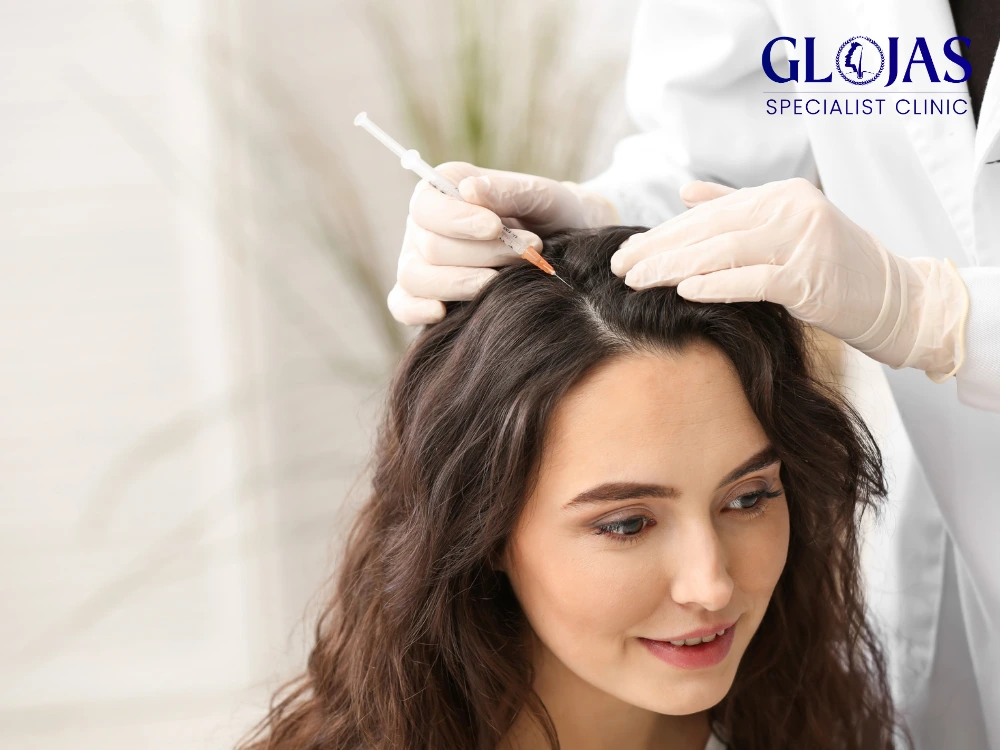
Keguguran rambut merupakan masalah yang sering dihadapi oleh wanita di seluruh dunia. Ia boleh disebabkan oleh pelbagai faktor seperti genetik, hormon, tekanan, atau keadaan kesihatan tertentu. Masalah ini bukan sahaja mempengaruhi penampilan fizikal, tetapi juga boleh merendahkan keyakinan diri seseorang. Oleh itu, prosedur tanam rambut wanita telah menjadi pilihan popular bagi mereka yang ingin memulihkan rambut yang hilang dan mendapatkan semula penampilan yang lebih yakin. Dalam artikel ini, kita akan membincangkan secara terperinci tentang tanam rambut wanita, proses yang terlibat, kos, dan faktor-faktor yang perlu dipertimbangkan. Apa Itu Tanam Rambut Wanita? Tanam rambut wanita merujuk kepada prosedur pemindahan folikel rambut dari kawasan donor, yang biasanya terletak di belakang kepala, ke kawasan yang mengalami keguguran rambut. Proses ini bertujuan untuk merangsang pertumbuhan rambut baru di kawasan yang jarang atau botak. Dalam dunia perubatan estetik, terdapat beberapa teknik yang digunakan untuk tanam rambut wanita, termasuk: 1. Follicular Unit Extraction (FUE) FUE adalah teknik yang paling popular dalam tanam rambut wanita. Dalam kaedah ini, folikel rambut diambil satu persatu dari kawasan donor menggunakan alat khas. Teknik ini tidak memerlukan sayatan besar dan menyebabkan parut yang minimum, menjadikannya pilihan yang menarik bagi banyak wanita. 2. Follicular Unit Transplantation (FUT) FUT, juga dikenali sebagai teknik jalur, melibatkan pengambilan jalur kulit yang mengandungi folikel rambut dari kawasan donor. Walaupun kaedah ini boleh meninggalkan parut yang lebih besar, ia biasanya lebih sesuai untuk wanita yang memerlukan jumlah folikel yang lebih banyak. 3. Direct Hair Implantation (DHI) DHI adalah teknik yang lebih baru di mana folikel rambut yang diambil akan ditanam secara terus ke dalam kulit kepala tanpa perlu membuat sayatan terlebih dahulu. Teknik ini membolehkan doktor menanam folikel dengan lebih tepat dan mengurangkan masa pemulihan. Kenapa Wanita Memilih Tanam Rambut? Terdapat banyak alasan mengapa wanita memilih untuk menjalani tanam rambut wanita: 1. Mengatasi Keguguran Rambut Masalah keguguran rambut adalah isu serius yang boleh mempengaruhi wanita pada sebarang usia. Prosedur ini menawarkan penyelesaian yang berkesan untuk merawat masalah ini dan membantu wanita mendapatkan semula keyakinan mereka. 2. Meningkatkan Penampilan Rambut yang lebat dan sihat sering kali menjadi simbol kecantikan dan daya tarikan. Dengan tanam rambut wanita, wanita dapat memulihkan penampilan mereka dan merasa lebih yakin dalam penampilan diri. 3. Hasil yang Kekal dan Semulajadi Salah satu kelebihan utama tanam rambut wanita adalah hasilnya yang tahan lama. Jika prosedur dilakukan dengan betul, rambut yang ditanam akan tumbuh seperti rambut semulajadi dan akan kekal selama bertahun-tahun. 4. Prosedur yang Selamat dan Berkesan Dengan kemajuan dalam teknologi perubatan, prosedur tanam rambut wanita kini lebih selamat dan memberikan hasil yang memuaskan. Teknik yang digunakan membolehkan pemindahan rambut dilakukan dengan risiko yang minimum. Proses Tanam Rambut Wanita Prosedur tanam rambut wanita melibatkan beberapa langkah yang penting untuk memastikan kejayaan. Berikut adalah panduan umum mengenai proses ini: 1. Konsultasi Awal Sesi konsultasi adalah langkah pertama yang perlu dilakukan sebelum menjalani prosedur. Dalam sesi ini, doktor akan menilai keadaan rambut dan kulit kepala pesakit. Mereka akan membincangkan sejarah perubatan, harapan pesakit, serta risiko dan kos yang terlibat. Ini adalah masa yang baik untuk bertanya tentang sebarang kebimbangan atau keraguan yang mungkin anda ada. 2. Persediaan Sebelum Prosedur Sebelum menjalani tanam rambut wanita, pesakit akan diberikan arahan mengenai persediaan. Ini termasuk mengelakkan pengambilan ubat tertentu yang boleh meningkatkan risiko pendarahan, serta memastikan pesakit berada dalam keadaan kesihatan yang baik. Pesakit juga dinasihatkan untuk tidak merokok atau mengelakkan alkohol beberapa hari sebelum prosedur. 3. Pelaksanaan Prosedur Prosedur tanam rambut wanita biasanya dilakukan di bawah anestesia tempatan. Doktor akan memulakan dengan mengambil folikel rambut dari kawasan donor. Dalam teknik FUE, folikel diambil satu persatu menggunakan alat khas. Sementara itu, dalam teknik FUT, sekeping kulit yang mengandungi folikel rambut akan diambil dan dipisahkan. Setelah folikel diambil, doktor akan menyiapkan kawasan yang akan ditanam. Ini melibatkan membuat sayatan kecil di kawasan tersebut dan menanam folikel rambut dengan teliti. Prosedur ini boleh mengambil masa antara 4 hingga 8 jam, bergantung kepada jumlah folikel yang ditanam. 4. Pemulihan Setelah prosedur selesai, pesakit akan diberi arahan penjagaan pasca-pembedahan. Ini termasuk cara menjaga kawasan yang ditanam, ubat-ubatan yang perlu diambil, dan aktiviti yang perlu dielakkan dalam tempoh pemulihan. Pemulihan penuh biasanya mengambil masa antara beberapa minggu hingga beberapa bulan. Kos Tanam Rambut Wanita Salah satu pertimbangan utama sebelum menjalani tanam rambut wanita adalah kos. Kos ini boleh berbeza-beza bergantung kepada beberapa faktor, termasuk lokasi klinik, pengalaman doktor, dan jumlah folikel yang ingin ditanam. Secara amnya, kos tanam rambut wanita di Malaysia boleh berbeza antara RM3,000 hingga RM15,000 atau lebih. 1. Lokasi Klinik Klinik yang terletak di bandar besar, seperti Kuala Lumpur, biasanya mengenakan kos yang lebih tinggi berbanding dengan klinik di kawasan luar bandar. Ini disebabkan oleh kos operasi yang lebih tinggi di kawasan bandar. 2. Kelayakan dan Pengalaman Doktor Doktor tanam rambut yang mempunyai pengalaman dan latar belakang yang baik dalam penanaman rambut biasanya mengenakan bayaran yang lebih tinggi. Memilih doktor yang berpengalaman adalah penting untuk memastikan prosedur dilakukan dengan selamat dan hasil yang memuaskan. 3. Kaedah Prosedur Seperti yang disebutkan sebelumnya, kaedah FUE biasanya lebih mahal daripada FUT. Kos juga boleh berbeza bergantung kepada jumlah folikel yang ingin ditanam. 4. Perkhidmatan Tambahan Beberapa klinik menawarkan perkhidmatan tambahan yang boleh mempengaruhi kos tanam rambut wanita. Ini termasuk rawatan selepas pembedahan, ubat penahan sakit, dan sesi susulan. Penjagaan Selepas Tanam Rambut Wanita Setelah menjalani prosedur tanam rambut wanita, penjagaan yang betul adalah penting untuk memastikan pertumbuhan rambut yang sihat. Berikut adalah beberapa langkah penjagaan yang perlu diambil: Elakkan Menggaru atau Menyentuh Kawasan Ditanam: Selepas prosedur, elakkan daripada menggaru atau menyentuh kawasan yang ditanam untuk mengelakkan jangkitan dan merosakkan folikel rambut yang baru ditanam. Menggunakan Produk yang Disyorkan: Ikuti arahan doktor tentang penggunaan produk penjagaan selepas pembedahan. Ini termasuk syampu dan losyen yang mungkin diperlukan untuk membantu proses penyembuhan. Pemakanan yang Seimbang: Makanan yang kaya dengan vitamin dan mineral penting dapat membantu mempercepatkan pemulihan. Pastikan anda makan makanan yang seimbang dan mencukupi. Elakkan Aktiviti Berat: Dalam beberapa minggu pertama selepas pembedahan, elakkan daripada melakukan aktiviti berat yang boleh menyebabkan tekanan pada kawasan yang ditanam. Pemeriksaan Susulan: Hadiri semua sesi pemeriksaan susulan yang
Thigh Liposuction Before & After: Stunning Transformations
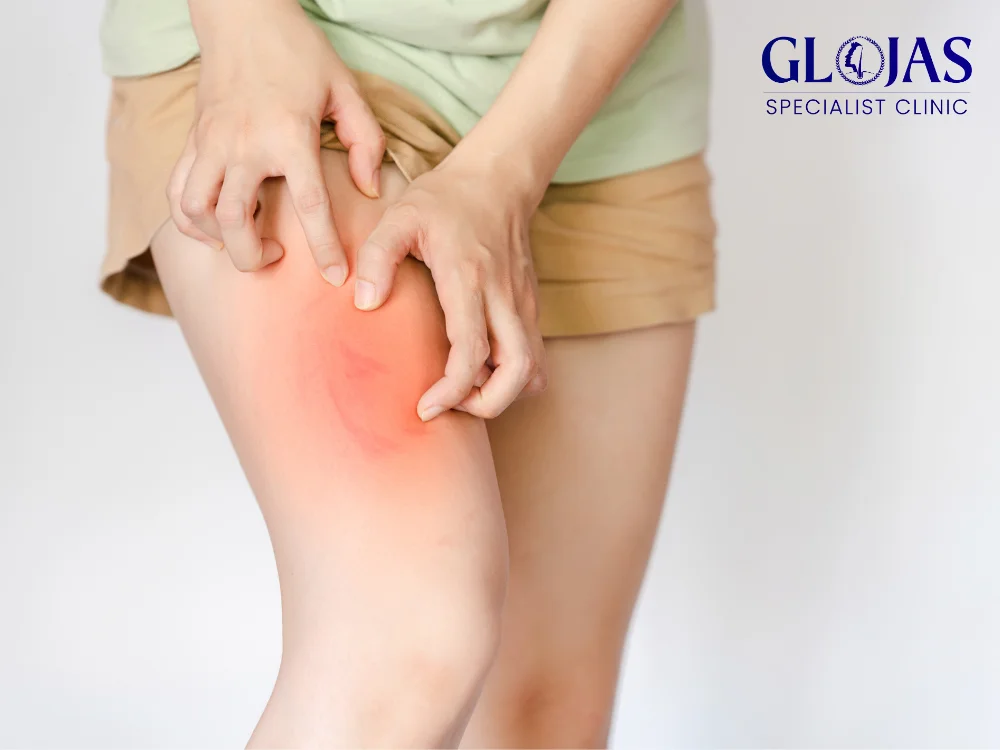
Thigh liposuction is a popular cosmetic procedure aimed at removing stubborn fat deposits from the thighs to enhance body contours. For individuals struggling to achieve toned, slim thighs despite diet and exercise, thigh liposuction offers a transformative solution. If you’re curious about the results, recovery, and what to expect, this detailed guide showcases impressive thigh liposuction before and after results, offering a clear picture of how this procedure can redefine your silhouette. What is Thigh Liposuction? Thigh liposuction is a cosmetic surgery designed to target excess fat in the thigh region. This procedure involves using a small suction device, known as a cannula, to remove fat cells permanently. It helps sculpt and contour the thighs, providing a more toned and proportional appearance. Why Choose Thigh Liposuction? Despite rigorous exercise routines and strict diets, the thighs can often retain stubborn fat. Thigh liposuction is ideal for individuals who: Struggle with localized fat that resists exercise. Desire more proportionate body contours. Seek permanent fat removal for a slimmer appearance. Thigh Liposuction Before and After: What to Expect Pre-Procedure Expectations Before undergoing thigh liposuction, you’ll have a thorough consultation with your surgeon. This step involves discussing: Your body goals and desired outcomes. Medical history and suitability for the procedure. Preparing for surgery, including avoiding blood thinners and smoking. Your surgeon may also show you past thigh liposuction before and after photos to set realistic expectations. The Procedure: Step-by-Step Thigh liposuction typically follows these key steps: Anesthesia: Local or general anesthesia is administered for comfort. Small Incisions: Tiny incisions are made in strategic areas of the thighs. Fat Removal: A cannula is inserted to suction out fat cells. Sculpting: The surgeon carefully shapes the thighs for a balanced, natural contour. Closure: Incisions are closed, and compression garments are applied. The procedure usually lasts 1-3 hours, depending on the extent of fat removal. Immediate Results After Surgery Immediately after the procedure, you may notice some swelling and bruising. While the final results take time to fully reveal, most patients report slimmer thighs and improved contours within weeks. Thigh Liposuction Before and After Results: Real Transformations The most exciting aspect of thigh liposuction is seeing the before and after results. Many individuals experience: Reduced Fat: Noticeable fat reduction in the inner and outer thighs. Improved Proportions: Better balance between the thighs and the rest of the body. Smoother Contours: A sleek, toned look that enhances confidence. Key Areas Targeted in Thigh Liposuction Inner Thighs: Removes fat that causes thigh chafing and bulges. Outer Thighs: Targets saddlebags for a slimmer outer contour. Posterior Thighs: Enhances the shape of the thighs and buttocks. Visualizing Results: What the Photos Show Before and after photos highlight the dramatic changes achieved through thigh liposuction. Patients often see: A clear reduction in thigh circumference. Improved skin tone and texture. A youthful, contoured appearance. Recovery After Thigh Liposuction Recovery is a crucial part of achieving optimal thigh liposuction before and after results. Timeline for Recovery First Week: Expect swelling, bruising, and mild discomfort. Compression garments help reduce swelling and promote healing. Weeks 2-4: Swelling begins to subside, and you can resume light activities. Weeks 4-6: Most patients return to regular activities, and results become more visible. 3-6 Months: Final results are fully apparent as the swelling completely resolves. Post-Procedure Care Tips Wear compression garments as instructed. Stay hydrated to aid recovery. Avoid strenuous activities for 4-6 weeks. Follow up with your surgeon to monitor progress. Benefits of Thigh Liposuction Thigh liposuction offers numerous advantages, making it a popular choice among patients. Enhanced Confidence: Achieve the toned legs you’ve always wanted. Permanent Fat Reduction: Removed fat cells do not return. Improved Mobility: Reduced inner thigh fat helps eliminate chafing. Customizable Results: Tailored to meet your body goals and proportions. Is Thigh Liposuction Right for You? While thigh liposuction is an effective procedure, it’s not for everyone. You are a good candidate if you: Have stubborn fat deposits in the thighs. Maintain a stable weight but struggle with localized fat. Are in good overall health with realistic expectations. Consulting with a qualified cosmetic surgeon is essential to determine if thigh liposuction aligns with your goals. Potential Risks and Considerations As with any surgical procedure, thigh liposuction carries some risks. These include: Swelling and bruising. Temporary numbness or sensitivity. Minimal scarring at incision sites. Choosing an experienced and board-certified surgeon can minimize risks and ensure the best thigh liposuction before and after results. Frequently Asked Questions FAQs 1. How long does it take to see final thigh liposuction results?Final results are typically visible within 3-6 months as swelling subsides completely. 2. Are thigh liposuction results permanent?Yes, the fat cells removed are permanently eliminated. However, maintaining a healthy lifestyle is key to preserving results. 3. Will there be visible scars after thigh liposuction?The incisions are very small and strategically placed to minimize visible scarring. Scars usually fade over time. 4. Is thigh liposuction painful?The procedure itself is not painful due to anesthesia. Post-surgery, patients may experience mild discomfort, which can be managed with prescribed medications. 5. How much does thigh liposuction cost?The cost varies depending on the surgeon’s experience, location, and the extent of fat removal. On average, prices range from $3,000 to $5,000. 6. Can I combine thigh liposuction with other procedures?Yes, many patients combine thigh liposuction with procedures like tummy tucks or buttock augmentation for enhanced results. Conclusion Thigh liposuction before and after results often demonstrate a dramatic transformation, offering a life-changing solution for individuals seeking to refine and contour their legs. By effectively removing stubborn fat deposits from the inner, outer, or front of the thighs, this procedure can significantly improve body proportions, enhance self-confidence, and address concerns such as inner thigh chafing or the appearance of “saddlebags.” It’s crucial to remember that thigh liposuction is a surgical procedure and carries inherent risks. Therefore, a thorough consultation with a board-certified plastic surgeon is essential to discuss your goals, assess your suitability for the procedure, and understand the potential risks and benefits. By carefully
10 Proven Benefits of Hair Implants: Transform Your Confidence Today
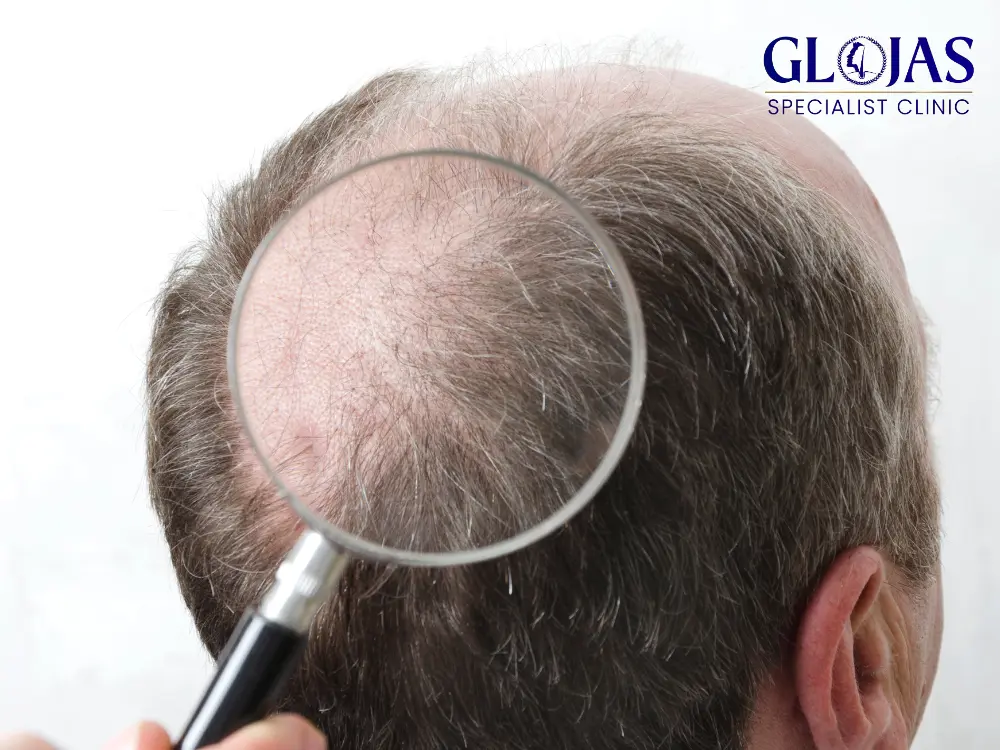
Hair loss is a common issue that affects millions of people worldwide. Whether it’s due to genetics, stress, or medical conditions, losing hair can have a significant impact on one’s self-esteem and overall confidence. Fortunately, advancements in medical technology have made hair implants an effective solution for those looking to regain their hair and confidence. In this article, we’ll explore the numerous benefits of hair implants, how the procedure works, and why it might be the right choice for you. What Are Hair Implants? Hair implants, also known as hair transplantation, involve moving hair follicles from one part of the body (usually the back of the scalp) to areas where hair is thinning or completely bald. This procedure has evolved over the years, becoming more sophisticated and yielding natural-looking results. Two main techniques are commonly used in hair implants: Follicular Unit Transplantation (FUT) and Follicular Unit Extraction (FUE). Follicular Unit Transplantation (FUT): This technique involves removing a strip of scalp from the donor area, dissecting it into individual follicular units, and then implanting them into the recipient area. Follicular Unit Extraction (FUE): In FUE, individual hair follicles are extracted directly from the donor area and implanted into the thinning or bald areas. FUE is less invasive than FUT and leaves minimal scarring. Benefits of Hair Implants Hair implants offer a range of benefits that go beyond just restoring hair. Below are some of the most compelling reasons to consider this procedure: 1. Permanent Solution to Hair Loss One of the most significant advantages of hair implants is that they provide a permanent solution to hair loss. Unlike temporary fixes such as wigs or hairpieces, hair implants offer a long-lasting solution that can dramatically improve your appearance and self-confidence. 2. Natural-Looking Results Modern hair implant techniques, particularly FUE, allow for natural-looking results. The transplanted hair grows just like your natural hair, blending seamlessly with the rest of your scalp. This makes it nearly impossible for others to detect that you’ve undergone a hair restoration procedure. 3. Minimal Downtime and Recovery Advancements in hair implant procedures have made the process less invasive, leading to quicker recovery times. Most patients can return to their normal activities within a few days, with only minimal discomfort during the recovery period. 4. Improved Self-Esteem and Confidence Hair loss can take a toll on your self-esteem, leading to anxiety and social withdrawal. Hair implants can help restore not just your hair but also your confidence, allowing you to feel more comfortable and secure in your appearance. 5. Cost-Effective in the Long Run While the upfront cost of hair implants might seem high, it’s a cost-effective solution in the long run. The permanent nature of the procedure means you won’t need to spend money on ongoing treatments, products, or temporary solutions that only provide short-term results. 6. Versatility in Hairstyling Once your hair has grown back after the implant procedure, you’ll have the freedom to style it however you like. Whether you prefer a short cut, a longer style, or even coloring your hair, implants give you the flexibility to choose your look. 7. Low Maintenance Hair implants require minimal maintenance once the hair has fully grown in. Unlike wigs or hairpieces, which need regular upkeep, your new hair can be treated just like your natural hair. Regular washing, cutting, and styling are all that’s needed. 8. High Success Rate Hair implants have a high success rate, with most patients experiencing significant hair regrowth within a few months of the procedure. The success of the treatment largely depends on the skill of the surgeon and the patient’s adherence to post-operative care instructions. 9. Suitable for Both Men and Women Hair implants are not limited to men; women experiencing hair loss can also benefit from this procedure. The techniques used are effective for both genders, providing a reliable solution for thinning hair or bald spots. 10. Boosted Social and Professional Life With restored hair and confidence, many people find that their social and professional lives improve significantly. Whether it’s in job interviews, social gatherings, or dating, looking and feeling your best can open up new opportunities. How to Prepare for a Hair Implant Procedure Before undergoing a hair implant procedure, there are several steps you should take to ensure the best possible outcome: Consultation with a Specialist: It’s crucial to consult with a qualified hair restoration specialist who can assess your hair loss and recommend the best course of action. Medical Evaluation: A thorough medical evaluation will help determine if you’re a suitable candidate for hair implants. Conditions like scalp infections or blood clotting disorders may affect your eligibility. Pre-Operative Instructions: Follow any pre-operative instructions provided by your surgeon, such as avoiding certain medications, alcohol, or smoking before the procedure. Plan for Recovery Time: While the downtime is minimal, plan to take a few days off work or other activities to rest and recover. Post-Procedure Care for Hair Implants After the hair implant procedure, proper care is essential to ensure optimal results: Follow Your Surgeon’s Instructions: Adhere to all post-operative care instructions, including how to clean the scalp and when to return for follow-up visits. Avoid Physical Strain: For at least a week after the procedure, avoid strenuous physical activities that could strain the scalp. Monitor for Complications: Be vigilant for any signs of complications such as excessive swelling, pain, or infection, and contact your doctor if they occur. Patience Is Key: Hair growth after implants takes time. It can take several months before you see significant results, so patience is crucial. FAQs about Hair Implants Q1: Are hair implants painful? The procedure is performed under local anesthesia, so pain during the surgery is minimal. Some discomfort may be experienced during recovery, but it’s generally manageable with over-the-counter pain relief. Q2: How long does the hair implant procedure take? Depending on the extent of the hair loss, the procedure can take anywhere from 4 to 8 hours. Q3: Can hair implants fail?
Hukum Transplantasi Rambut Menurut Islam, Apakah Boleh?
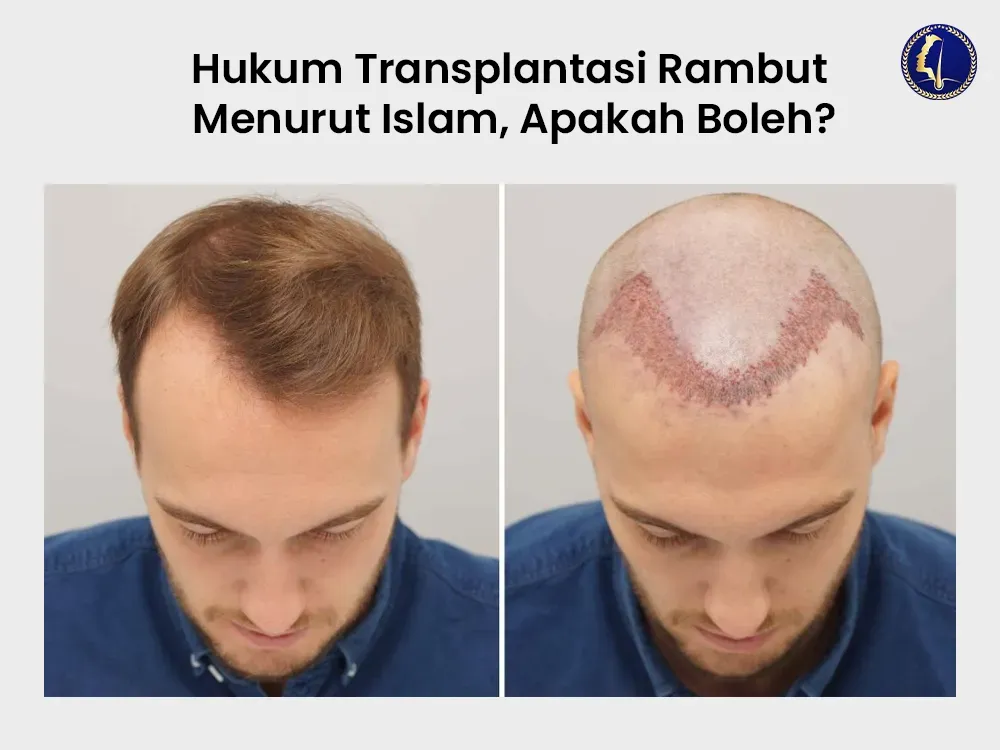
Kerontokan rambut adalah proses alami yang dialami banyak orang akibat faktor genetik, usia, atau kondisi kesehatan. Dengan kemajuan di bidang medis, prosedur transplantasi rambut indonesia kini menjadi solusi untuk mengembalikan rambut yang hilang. Namun, banyak Muslim bertanya-tanya tentang kehalalan praktik ini dalam pandangan Islam. Artikel ini membahas transplantasi rambut dalam Islam dengan merujuk pada sumber-sumber terpercaya, pendapat ulama, serta menjawab pertanyaan-pertanyaan umum terkait topik ini. Apa Itu Transplantasi Rambut? Tranplantasi rambut adalah prosedur bedah di mana folikel rambut dipindahkan dari satu bagian tubuh (biasanya bagian belakang atau samping kepala) ke area yang mengalami kebotakan atau penipisan. Proses ini tidak melibatkan bahan asing atau sintetis, melainkan mendistribusikan kembali rambut alami dari tubuh pasien sendiri. Prosedur ini semakin populer karena mampu meningkatkan rasa percaya diri. Hukum Transplantasi Rambut dalam Islam Dalam Islam, modifikasi tubuh diatur oleh prinsip-prinsip yang bertujuan menjaga keadaan alami tubuh (“fitrah”). Perubahan yang bertujuan untuk kecantikan berlebih atau mengubah ciptaan Allah secara tidak wajar biasanya dianggap haram. Namun, modifikasi untuk tujuan medis atau untuk mengatasi dampak fisik maupun psikologis sering kali diperbolehkan (“maslahah”). Ketika menilai hukum transplantasi rambut, para ulama mempertimbangkan beberapa faktor: Menggunakan Rambut Alami: Karena transplantasi rambut melibatkan distribusi ulang folikel rambut pasien sendiri, prosedur ini tidak menambahkan elemen asing ke dalam tubuh. Ini berbeda dengan penggunaan wig sintetis atau rambut palsu, yang mungkin bertentangan dengan prinsip Islam tertentu. Tujuan Prosedur: Tanam rambut sering dilakukan untuk menangani kondisi seperti alopecia, kerontokan rambut parah, atau kebotakan akibat penyakit, cedera, atau penuaan. Jika kondisi ini menyebabkan stres psikologis atau memengaruhi kualitas hidup, ulama Islam menganggap prosedur ini diperbolehkan. Menghindari Penipuan: Islam menekankan kejujuran dan transparansi dalam interaksi pribadi. Tanam rambut, tidak seperti solusi sementara, tidak melibatkan penipuan karena hasilnya permanen dan menggunakan rambut alami pasien. Oleh karena itu, prosedur ini tidak dianggap sebagai bentuk penipuan (“gurur”). Pendapat Ulama Pendapat ulama mengenai prosedur kosmetik dan medis bervariasi, tetapi konsensus tentang transplantasi rambut umumnya mendukung kehalalannya dalam kondisi tertentu. Beberapa pandangan utama meliputi: Fatwa dari Akademi Fikih Islam: Akademi Fikih Islam mengeluarkan fatwa bahwa transplantasi rambut diperbolehkan jika dilakukan untuk mengatasi kebotakan atau kerontokan rambut yang signifikan, terutama jika kondisi ini menyebabkan dampak emosional atau psikologis. Pandangan Sheikh Yusuf Al-Qaradawi: Dalam bukunya Halal dan Haram dalam Islam, Sheikh Yusuf Al-Qaradawi menekankan bahwa prosedur yang bertujuan untuk mengembalikan penampilan alami, bukan untuk mengubahnya secara berlebihan, umumnya diperbolehkan. Ia menyatakan bahwa mengembalikan rambut yang hilang akibat penyakit atau cedera termasuk dalam kategori perawatan medis yang halal. Fatwa dari Dar al-Ifta al-Misriyyah (Dewan Fatwa Mesir): Dewan ini menjelaskan bahwa transplantasi rambut diperbolehkan selama tujuannya adalah untuk memulihkan kondisi alami dan mengatasi masalah medis, bukan untuk kecantikan yang berlebihan. Pertimbangan Utama Kehalalan Untuk memastikan transplantasi rambut sesuai dengan panduan Islam, berikut beberapa hal yang perlu diperhatikan: Niat (“Niyyah”): Niat pasien harus untuk mengatasi kebutuhan yang nyata, seperti memulihkan rasa percaya diri atau mengurangi stres akibat kerontokan rambut, bukan untuk tujuan kecantikan semata. Metode Pelaksanaan: Prosedur harus menghindari penggunaan bahan atau teknik yang haram. Tanam rambut harus menggunakan folikel pasien sendiri dan dilakukan dengan praktik medis yang etis. Menghindari Pemborosan (“Israf”): Islam melarang pemborosan. Meski transplantasi rambut bisa mahal, pasien harus memastikan biaya tersebut tidak mengorbankan tanggung jawab finansial lainnya. Konsultasi dengan Ulama dan Ahli Medis: Sebelum menjalani prosedur, sangat disarankan untuk berkonsultasi dengan ulama Islam yang kompeten dan dokter profesional untuk memastikan keamanan dan kehalalannya. Rujukan Islam tentang Modifikasi Tubuh Kehalalan transplantasi rambut dapat dipahami lebih lanjut melalui beberapa teks dan prinsip Islam: Pemulihan vs. Perubahan: Rasulullah SAW bersabda: “Allah melaknat orang yang membuat tato, meminta dibuatkan tato, mencabut bulu wajah, dan membuat celah di antara giginya untuk terlihat cantik, serta mengubah ciptaan Allah” (Sahih Bukhari, Kitab 72, Hadis 822). Ulama menafsirkan hadis ini sebagai larangan terhadap kecantikan berlebihan yang mengubah ciptaan Allah. Namun, mengembalikan penampilan alami, seperti melalui transplantasi rambut, tidak termasuk dalam larangan ini. Kebutuhan Medis: Rasulullah SAW juga bersabda: “Tidak ada penyakit yang Allah ciptakan kecuali Dia juga menciptakan obatnya” (Sahih Bukhari, Kitab 71, Hadis 582). Mengatasi kondisi seperti alopecia atau kerontokan rambut parah melalui perawatan medis sejalan dengan prinsip Islam untuk mencari pengobatan atas penyakit. Jawaban untuk Pertanyaan Umum Berikut adalah jawaban untuk beberapa pertanyaan umum terkait transplantasi rambut dalam Islam: 1. Apakah transplantasi rambut dianggap mengubah ciptaan Allah? Tidak, transplantasi rambut tidak dianggap mengubah ciptaan Allah karena prosedur ini bertujuan untuk memulihkan kondisi alami. Ini berbeda dengan prosedur yang mengubah penampilan secara tidak wajar. 2. Apakah ada kondisi di mana transplantasi rambut tidak diperbolehkan? Tanam rambut mungkin tidak diperbolehkan jika melibatkan bahan yang haram, praktik medis yang tidak etis, atau jika niatnya hanya untuk kecantikan yang tidak diperlukan. 3. Apakah wanita diperbolehkan menjalani transplantasi rambut dalam Islam? Ya, wanita diperbolehkan menjalani transplantasi rambut untuk mengatasi kerontokan rambut signifikan atau kondisi medis, selama prosedurnya sesuai dengan panduan mengenai niat, metode, dan kebutuhan. 4. Apakah biaya prosedur memengaruhi kehalalannya? Meski biaya tidak menentukan kehalalan, Islam mendorong kesederhanaan dan menghindari pemborosan. Pastikan biaya prosedur wajar dan tidak mengorbankan tanggung jawab finansial lainnya. 5. Apa yang harus dilakukan sebelum memutuskan transplantasi rambut? Sebelum memutuskan, konsultasikan dengan dokter profesional untuk memastikan keamanannya dan ulama Islam untuk memastikan kehalalannya berdasarkan kondisi spesifik Anda. Kesimpulan Tanam rambut secara umum diperbolehkan dalam Islam jika dilakukan untuk mengatasi kebutuhan medis atau psikologis yang nyata. Prosedur ini dianggap sebagai cara untuk memulihkan penampilan alami, bukan mengubah ciptaan Allah. Dengan memastikan niat yang benar dan mengikuti panduan Islam, Muslim dapat memanfaatkan kemajuan ini tanpa melanggar ajaran agama. Seperti biasa, konsultasi dengan ulama dan dokter terpercaya sangat penting untuk membuat keputusan yang tepat dan etis.
5 Effective Chin Fat Removal Techniques That Can Transform
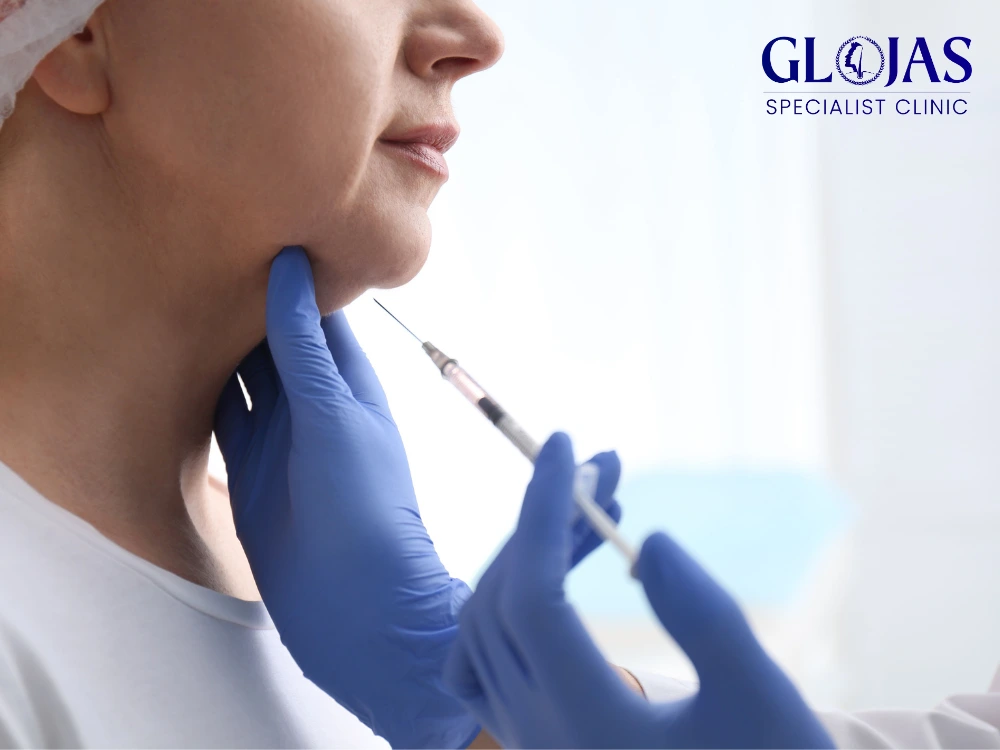
Chin fat, commonly referred to as a “double chin,” is a concern for many people, regardless of their age or weight. A double chin can be caused by factors like genetics, weight gain, or natural aging, and it often affects a person’s confidence and appearance. Thankfully, advancements in cosmetic treatments and lifestyle changes offer multiple ways to achieve chin fat removal and regain a more defined jawline. In this comprehensive guide, we’ll explore five highly effective methods for chin fat removal, helping you make an informed decision on which option best suits your needs. What Causes Chin Fat? Chin fat, or submental fat, accumulates beneath the chin and can create the appearance of a double chin. This can happen for several reasons: 1. Genetics Some individuals are predisposed to accumulating fat in the chin area due to their genetic makeup. Even if they maintain a healthy weight, they may still develop a double chin because of their inherited body structure. 2. Weight Gain When you gain weight, fat tends to accumulate in various parts of the body, including the face and chin area. Excess fat in this region can lead to a noticeable double chin. 3. Aging As we age, the skin loses elasticity, and muscle tone decreases, causing fat deposits to sag. The loss of collagen and elastin in the skin can also make a double chin more prominent, even without significant fat accumulation. 4. Poor Posture Slouching or maintaining poor posture over time can weaken the muscles in your neck and chin, causing the skin to sag and create the illusion of excess fat, even in individuals who are not overweight. Top Chin Fat Removal Techniques There are both non-surgical and surgical options available for chin fat removal. Below are five of the most effective methods, each with its own benefits and considerations: 1. Kybella Injections Kybella is an FDA-approved, non-surgical treatment for chin fat removal. The main ingredient, deoxycholic acid, is a naturally occurring substance in the body that helps break down and absorb dietary fat. When injected into the chin area, Kybella destroys fat cells, which are then gradually eliminated through the body’s metabolic processes. Benefits of Kybella: Minimally invasive with no incisions or stitches Permanent results, as the destroyed fat cells do not return Sessions typically last 15-20 minutes Minimal downtime, though some swelling and redness may occur Considerations: Multiple treatments (usually 2-4) are required for optimal results Some swelling and bruising post-treatment may last for a few days 2. CoolSculpting (Cryolipolysis) CoolSculpting is a non-invasive treatment that uses controlled cooling to freeze and destroy fat cells. This procedure is FDA-approved for treating submental fat and can be an excellent option for those looking for chin fat removal without surgery. Benefits of CoolSculpting: Non-surgical and non-invasive No downtime; most patients can return to normal activities immediately Gradual, natural-looking fat reduction over 1-3 months Considerations: Multiple sessions may be required to achieve the desired results Some patients may experience temporary numbness or redness in the treated area 3. Liposuction Liposuction is a surgical procedure used to remove fat from specific areas of the body, including the chin. During chin liposuction, a small incision is made, and a thin tube called a cannula is inserted to suction out the fat. Benefits of Liposuction: Immediate and dramatic results after the procedure Permanent fat removal, as fat cells do not regenerate Can be combined with other cosmetic procedures, such as a facelift, for enhanced results Considerations: Requires downtime and recovery, typically 1-2 weeks Potential for swelling, bruising, and temporary discomfort Risks associated with surgery, such as infection or scarring 4. Ultherapy (Ultrasound Therapy) Ultherapy uses ultrasound energy to tighten the skin and reduce the appearance of chin fat. This treatment targets deep layers of the skin, stimulating collagen production, which tightens and lifts the chin area over time. Benefits of Ultherapy: Non-invasive with no downtime required Helps tighten loose skin in addition to reducing fat Results develop gradually over 2-3 months as collagen production increases Considerations: Best suited for individuals with mild to moderate fat or sagging skin Some patients report mild discomfort during the procedure Results can last up to two years but may require maintenance treatments 5. Chin Exercises While targeted fat loss is not possible, strengthening and toning the muscles around your jawline can improve the appearance of a double chin. Exercises such as chin lifts, neck stretches, and jaw movements can help firm up the muscles and skin around the chin and neck. Benefits of Chin Exercises: Completely non-invasive and cost-free Can help improve posture, which may also reduce the appearance of a double chin Effective in combination with other chin fat removal methods Considerations: Results take time and require consistent effort Limited impact on fat reduction, as it primarily tones muscles How to Maintain Results After Chin Fat Removal Whether you choose a surgical or non-surgical method for chin fat removal, maintaining your results is essential to ensure long-lasting effects. Here are some tips to help you maintain a defined jawline: 1. Follow a Healthy Diet Maintaining a balanced diet that’s low in unhealthy fats and sugars can help prevent fat from returning to the chin area. Incorporating whole foods like fruits, vegetables, lean proteins, and whole grains can support a healthy weight. 2. Regular Exercise Incorporate regular physical activity to maintain your overall weight and prevent fat accumulation in unwanted areas. Exercises that focus on cardio and strength training can help you stay in shape. 3. Hydrate and Moisturize Your Skin Keeping your skin hydrated by drinking plenty of water and using moisturizers can enhance skin elasticity and prevent sagging. 4. Maintain Good Posture Standing and sitting upright can prevent sagging skin under your chin. Regularly practicing good posture also helps tone the muscles in your neck and chin. Frequently Asked Questions (FAQs) About Chin Fat Removal 1. Is chin fat removal permanent? Yes, treatments like Kybella and liposuction offer permanent fat removal, as the fat cells are destroyed and
Perbaharui Diri Anda Dengan Vaginal Tightening l GLOJAS AESTHETIC CLINIC
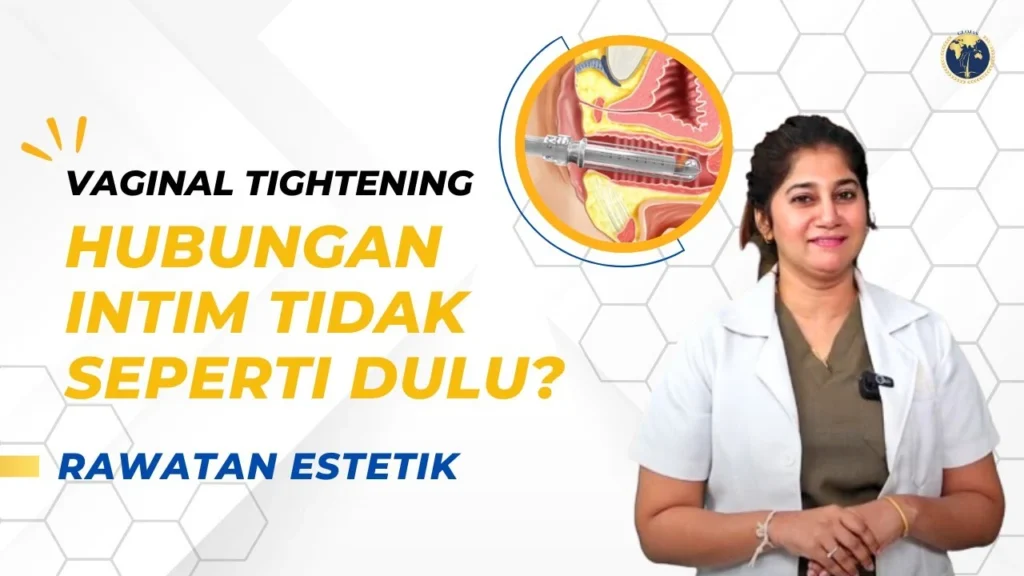
Video “Perbaharui Diri Anda Dengan Vaginal Tightening l GLOJAS AESTHETIC CLINIC” ini menerangkan rawatan pengetatan faraj di GLOJAS Aesthetic Clinic menggunakan teknologi laser. Rawatan ini dirancang untuk merangsang pengeluaran kolagen, memperbaiki keanjalan tisu faraj, dan meningkatkan pelinciran serta sensasi. Prosedur ini sesuai untuk wanita yang mengalami kelonggaran akibat penuaan atau kelahiran bayi. Dengan pendekatan tanpa pembedahan dan tanpa kesakitan, rawatan ini membantu memulihkan keyakinan diri wanita, bergantung kepada konsultasi dan keperluan individu. #aestheticclinicmalaysia
Transform Your Skin with Chemical Peel | GLOJAS AESTHETIC CLINIC
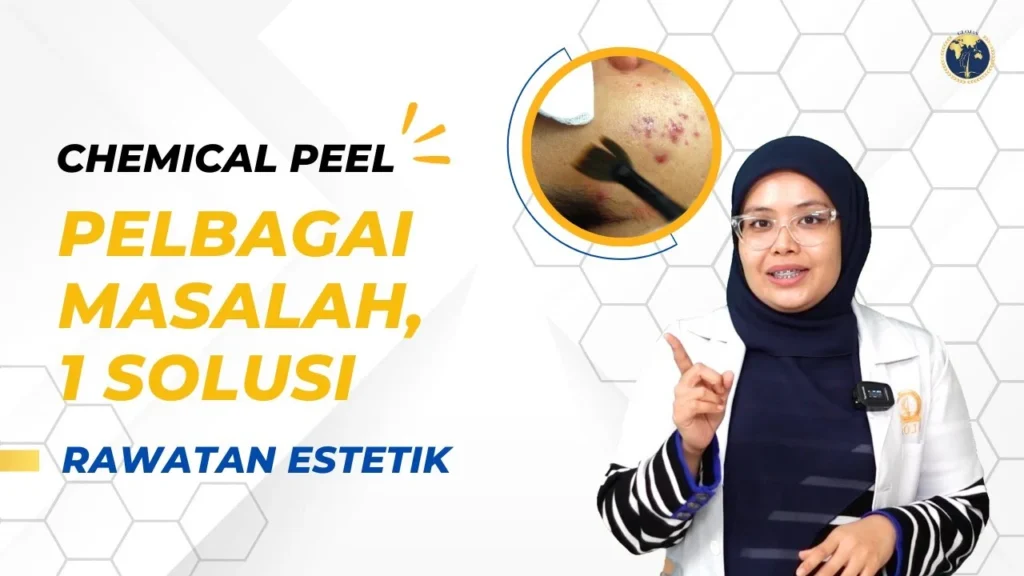
The video “Transform Your Skin with Chemical Peel” introduces the chemical peel treatment at GLOJAS Aesthetic Clinic, emphasizing its benefits in addressing various skin issues such as acne scars, hyperpigmentation, dullness, and fine lines. Using 35% trichloroacetic acid (TCA), the treatment rejuvenates the skin by exfoliating dead cells, improving texture, and minimizing pores. With no needles, minimal pain, and downtime, the procedure is tailored to individual needs after a professional consultation, offering a comprehensive solution for healthier, radiant skin. #aestheticclinicmalaysia
Tips & Rawatan: Rahsia Kulit Sihat dengan Dr. Qif | Glojas Aesthetic Clinic Kuala Lumpur
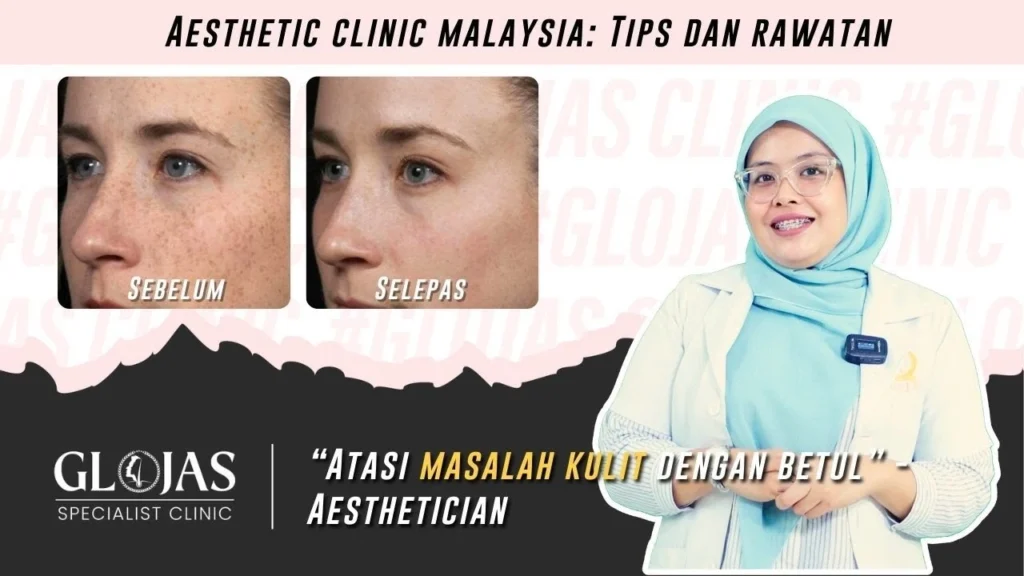
Video “Tips & Rawatan: Rahsia Kulit Sihat dengan Dr. Qif” ini menampilkan panduan penjagaan kulit oleh Dr. Qif di Glojas Aesthetic Clinic, menekankan kepentingan memilih produk sesuai dengan jenis kulit. Kulit berminyak, kering, kombinasi, dan sensitif memerlukan rutin penjagaan yang berbeza untuk menjaga keseimbangan dan kesihatan kulit. Produk asas seperti pencuci muka, pelembap, dan pelindung matahari disarankan untuk semua jenis kulit. Penjagaan kulit yang betul dapat meningkatkan kecantikan semula jadi dan keyakinan diri, dengan janji temu di klinik sebagai langkah tambahan untuk hasil optimum. #aestheticclinicmalaysia
Medlite Laser Treatment: Kulit Jernih, Awet Muda

Video “Medlite Laser Treatment: Kulit Jernih, Awet Muda” ini menunjukkan rawatan laser Medlite di Glojas Aesthetic Clinic Kuala Lumpur, direka untuk mengurangkan hiperpigmentasi dan memberikan tona kulit sekata. Selain itu, pesakit menjalani prosedur mikrodermabrasi yang melibatkan lima kaedah untuk membersihkan whiteheads, blackheads, dan sel kulit mati, membantu mencapai kulit yang ideal. Rawatan ini diakhiri dengan pujian pesakit terhadap profesionalisme dan hasil rawatan yang sangat memuaskan. #aestheticclinicmalaysia
3 Proven Solutions to Get Rid of Marionette Lines and Restore Youthful Skin
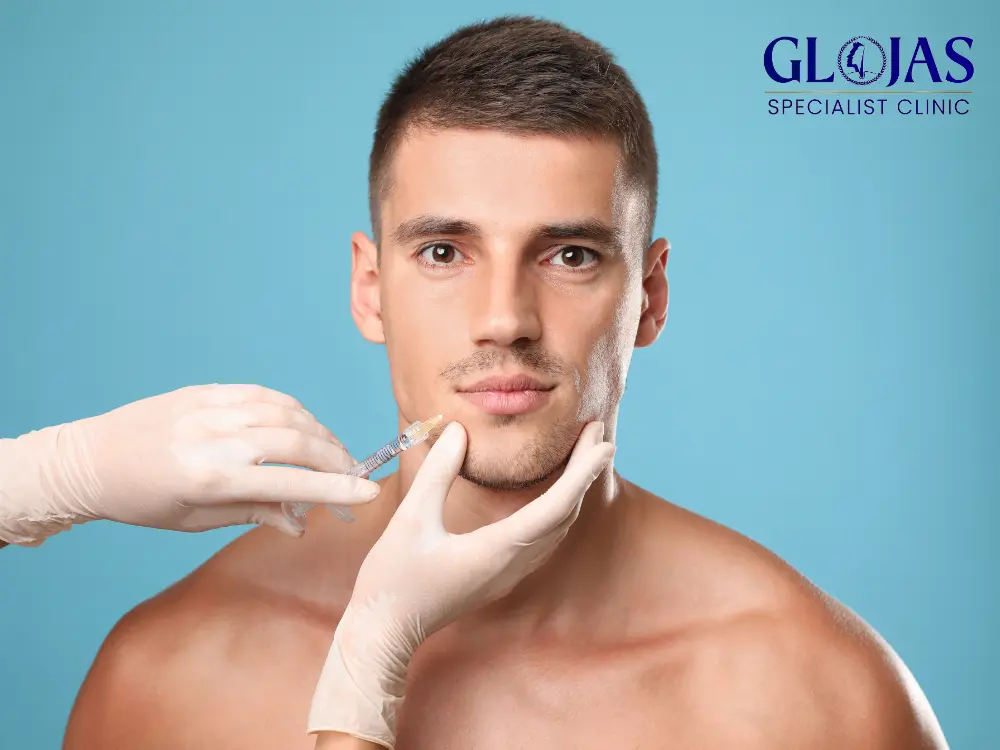
As we age, one of the most common signs of facial aging is the development of marionette lines. These lines, which run from the corners of the mouth down to the chin, can make the face appear older, more tired, or even sad. The good news is that there are effective treatments available to reduce or eliminate marionette lines, helping you restore a youthful and rejuvenated appearance. In this article, we’ll explore the causes of marionette lines, discuss popular treatment options, and introduce the revolutionary non-invasive treatment, Exilis. What Are Marionette Lines? Marionette lines are vertical wrinkles that appear on either side of the mouth, extending down to the chin. These lines are named after marionette puppets, whose mouths often have visible lines at the corners. They develop naturally as part of the aging process due to a combination of factors such as: Loss of skin elasticity: Over time, the skin loses collagen and elastin, leading to sagging and the formation of deep lines. Volume loss: As facial fat diminishes with age, the skin around the mouth can droop, causing deeper creases. Repeated facial expressions: Smiling, frowning, and other expressions contribute to the development of these lines over time. While marionette lines are a natural part of aging, they can be distressing for some individuals as they may give the appearance of a downturned mouth or a permanently sad expression. Causes of Marionette Lines Several factors contribute to the formation of marionette lines, including: 1. Aging The most significant factor in the development of marionette lines is aging. As we age, our skin produces less collagen and elastin, which are essential for maintaining skin’s firmness and elasticity. This loss of collagen causes the skin to sag and wrinkles to form, particularly around areas of frequent movement, such as the mouth. 2. Genetics Your genetic makeup can influence how and when you develop marionette lines. If your family members developed these lines early, you may be more prone to them. 3. Environmental Factors Sun exposure, smoking, and pollution can all accelerate the aging process by breaking down collagen and causing skin damage. These factors can contribute to the premature appearance of marionette lines. 4. Facial Expressions Repeated facial movements, such as frowning, smiling, and talking, can gradually etch marionette lines into the skin. While these expressions are a natural part of life, over time they lead to dynamic wrinkles becoming static wrinkles. How to Treat Marionette Lines Thankfully, there are several effective treatments to reduce or eliminate marionette lines, ranging from non-invasive procedures to surgical options. Let’s explore some of the most popular and proven solutions. 1. Dermal Fillers One of the most popular and effective treatments for marionette lines is the use of dermal fillers. Fillers such as hyaluronic acid (HA) are injected into the skin to add volume and smooth out wrinkles. Fillers work by plumping up the area around the marionette lines, giving the face a more youthful and rejuvenated appearance. Benefits of Dermal Fillers: Immediate results: Patients typically see results immediately after the treatment. Non-invasive: Dermal fillers are minimally invasive with little to no downtime. Long-lasting: Results can last anywhere from 6 months to 2 years, depending on the type of filler used. However, dermal fillers are temporary solutions, and patients will need repeat treatments to maintain the results. 2. Botox While Botox is often associated with treating forehead wrinkles and crow’s feet, it can also be used to improve the appearance of marionette lines. Botox works by temporarily relaxing the muscles responsible for pulling down the corners of the mouth, allowing the skin to appear smoother and less wrinkled. Benefits of Botox: Quick treatment: Botox injections typically take 10-15 minutes. Minimal downtime: Patients can return to normal activities immediately after the procedure. Effective for dynamic wrinkles: Botox helps reduce the appearance of wrinkles caused by repeated facial movements. The effects of Botox last for 3 to 6 months, after which patients will need additional injections to maintain the results. 3. Exilis: A Revolutionary Non-Invasive Solution If you’re looking for a non-invasive, pain-free solution to treat marionette lines, Exilis might be the perfect option for you. Exilis is an FDA-approved treatment that uses radiofrequency and ultrasound technology to tighten skin and improve the appearance of wrinkles, including marionette lines. Exilis works by heating the deeper layers of the skin, stimulating collagen production and enhancing skin firmness. This leads to tighter skin and a reduction in the appearance of marionette lines over time. Benefits of Exilis: Non-invasive: Exilis requires no surgery, needles, or incisions. No downtime: Patients can resume normal activities immediately after treatment. Comfortable: The procedure is virtually pain-free, with most patients experiencing a warming sensation. Long-lasting results: Collagen production continues for several months after the procedure, providing long-term improvements. Most patients require a series of treatments, usually 4 to 6 sessions spaced 1 to 2 weeks apart, to achieve optimal results. Preventing Marionette Lines While it’s impossible to completely stop the aging process, there are steps you can take to slow down the development of marionette lines: Stay Hydrated: Drinking plenty of water helps keep the skin hydrated and supple. Wear Sunscreen: Protecting your skin from UV damage with a broad-spectrum sunscreen can help preserve collagen and prevent wrinkles. Avoid Smoking: Smoking accelerates aging and breaks down the skin’s collagen, leading to premature lines and wrinkles. Use Anti-Aging Skincare Products: Products containing retinoids, peptides, and hyaluronic acid can help stimulate collagen production and keep the skin looking youthful. Maintain a Healthy Diet: A diet rich in antioxidants, vitamins, and minerals helps protect the skin from free radical damage. FAQs About Marionette Lines 1. At what age do marionette lines typically appear? Marionette lines usually start to appear in your 30s or 40s, but they can develop earlier depending on genetics and lifestyle factors such as sun exposure and smoking. 2. Can marionette lines go away naturally? While there are ways to delay the onset of marionette lines, they will
